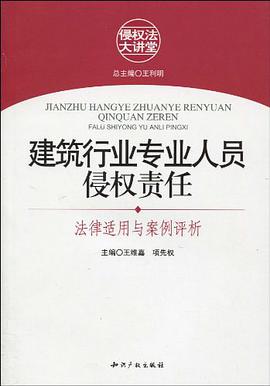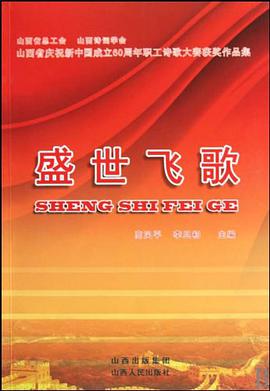Cover
Half Title
Series Information
Title Page
Copyright Page
Table of contents
Preface to the first edition
Preface to the second edition
Preface to the third edition
Acknowledgements
Part I Health and pollution
Chapter 1 Engineering and infectious disease
1.1 Introduction
1.2 Water-related infections
Classification of transmission mechanisms
1. Water-borne route
2. Water-washed route
3. Water-based route
4. Insect vector route
Classification of infections
I. Faecal–oral diseases (non-bacterial)
1.3 Excreta-related infections
Latency and persistence
Conclusions
1.4 Refuse-related infections
1.5 Housing-related infections
1.6 Public and domestic domains
1.7 Summary
1.8 References
1.9 Further reading
Chapter 2 Health and water chemistry
2.1 Introduction
2.2 The absence of necessary chemicals
2.3 Harmful organics
Environmental pollution by the oil industry
2.4 Harmful inorganics
2.5 References
2.6 Further reading
Chapter 3 Water quality and standards
3.1 Drinking water quality
Microbiological characteristics
Microbiological tests
Microbiological standards
Chemical and physical characteristics
3.2 Wastewater quality
Introduction
Suspended solids
Oxygen demand
Pathogenic micro-organisms
Toxic chemicals
Effluent quality and disposal
3.3 Industrial wastes
The problem
Control
3.4 Bathing water quality
3.5 Irrigation water quality
3.6 Water quality and fish
3.7 Water quality standards and QMRA
3.8 References
3.9 Further reading
Part II Water supply
Chapter 4 Water supplies in low and middle income countries
4.1 The haves and the have nots
4.2 Operation and maintenance
4.3 Appropriate technology
4.4 Benefits
Production
Health
Time and energy savings, and their money value
4.5 Cost recovery and the private sector
4.6 Rural supplies and self-help
4.7 Self-supply
4.8 Hygiene promotion
4.9 Evaluation
4.10 Climate change and integrated water resource management
4.11 References
4.12 Further reading
Chapter 5 Rural water supply
5.1 Breakdowns and technology
Design for maintenance
5.2 Sources of water
Protected springs
Wells
Pollution of wells and boreholes
Well disinfection
5.3 Raising water
Hand power
Natural sources of power
Motor pumps
5.4 Storage
5.5 Treatment in a rural context
Storage
Sedimentation
Filtration and chlorination
Removal of minerals and salts
Household water treatment
5.6 Water distribution
Individual connections
Public water points
5.7 References
5.8 Further reading
Chapter 6 Urban water supply and water treatment
6.1 Introduction
6.2 Coagulation and sedimentation
Fluoride and arsenic removal
6.3 Filtration
6.4 Disinfection
Chlorine demand
Free residuals
Combined residuals
The breakpoint
Chlorine dose
Control of the dose
Testing for chlorine
Sources of chlorine
The application of chlorine
6.5 Distribution
6.6 Water demand management
Tariff policy
Water-saving taps and fittings
Consumer education and information
6.7 References
6.8 Further reading
Part III Excreta and refuse
Chapter 7 Excreta disposal in low and middle income countries
7.1 The haves and have nots
7.2 The evolving agenda of sanitation for the poor
7.3 Cities and the need for hygienic management of faecal sludge
7.4 Relative costs of sanitation systems
Subsidy
7.5 References
7.6 Further reading
Chapter 8 Types of excreta disposal system
8.1 Introduction
8.2 Pit latrines
8.3 VIP latrines
8.4 Difficulties with pit latrines
Flooding
Rocky ground
Sand
Water contamination
Nitrate accumulation
8.5 Pour-flush toilets
8.6 Vault toilets and cartage
8.7 Septic tanks
8.8 Small-bore sewers
Simplified sewerage
8.9 Other systems
Bucket latrines, and their renaissance as container-based sanitation
Aqua privies
Cesspools
Compost toilet
8.10 Communal latrines
8.11 Soil conditions
8.12 Soakaway designs
8.13 Personal hygiene
8.14 Sullage disposal
8.15 Nightsoil and sludge re-use and disposal
Agriculture
Aquaculture
Energy
Disposal
8.16 Water availability
8.17 References
8.18 Further reading
Chapter 9 Planning a sanitation programme
9.1 Programme context and content
Context
Content
9.2 Sanitation marketing
The four Ps of marketing
Product
Price
Place
Promotion
The process of sanitation marketing
1) Win consensus
2) Learn about the market
3) Overcome barriers, promote demand
4) Develop the right products
5) Develop a thriving industry
6) Regulate waste transport and final disposal
9.3 Choice of system
9.4 Social factors
The extension system
9.5 Costs
Economic costs
Financial costs
9.6 Operation and maintenance
9.7 Incremental sanitation
9.8 References
9.9 Further reading
Chapter 10 Wastewater treatment
10.1 Introduction
10.2 Waste characteristics
10.3 Waste stabilisation ponds
Anaerobic ponds
Facultative ponds
Maturation ponds
High-rate ponds
Bacterial reduction
Helminth egg removal
Location
Design features
Pre-treatment
Pond maintenance
Troubleshooting and remedial measures
10.4 Aerated lagoons
10.5 Oxidation ditches
10.6 Pathogen removal
10.7 Sewage workers’ health
10.8 References
10.9 Further reading
Chapter 11 Surface water drainage
11.1 Introduction
11.2 Town planning implications
11.3 Technical aspects
Resources
Objectives
Channels
Sediment
Solid waste management and maintenance
Realistic enforcement
Organisation
11.4 Institutional aspects
11.5 References
11.6 Further reading
Chapter 12 Solid waste management
12.1 Introduction
12.2 Waste characteristics
12.3 Hazards of refuse mismanagement
12.4 Storage and collection
Vehicles and transfer
12.5 Treatment and disposal
Sanitary landfill
Incineration
Composting
Choice of method
12.6 References
12.7 Further reading
Chapter 13 Composting
13.1 Aerobic and anaerobic composting
13.2 Techniques
Forced aeration
13.3 Carbon/nitrogen.ratio
13.4 Problems of composting
13.5 Individual composting toilets
13.6 References
13.7 Further reading
Chapter 14 Health aspects of waste use
14.1 Introduction
14.2 Health and agricultural use
14.3 Health and fish farming
1) Passive transference of pathogens by fish
2) Transmission of helminths
3) The risk to fishery workers of schistosomiasis
14.4 References
14.5 Further reading
Part IV Environmental modifications and vector-borne diseases
Chapter 15 Engineering control of insect-borne diseases
15.1 Introduction
15.2 Mosquito-borne diseases
Malaria
1) Chemotherapy of infected people
2) Killing of adult mosquitoes
3) Treatment or elimination of breeding sites
Filariasis
Yellow fever, dengue and other arboviruses
15.3 Fly-borne diseases
Sleeping sickness
Onchocerciasis
Leishmaniasis
Loiasis
Mechanical transmission
15.4 Chagas disease and bugs
15.5 Lice, fleas, ticks and mites
15.6 Conclusions
15.7 References
15.8 Further reading
Chapter 16 Dams, irrigation and health
16.1 General considerations
Planning for health
The construction phase
Displaced persons
Agricultural workers
Changes in the local ecosystem which affect disease patterns
16.2 Onchocerciasis
16.3 Malaria
16.4 Arboviral infections
16.5 Bancroftian and Malayan filariasis
16.6 Spillways and reservoir release policies
Onchocerciasis and reservoir release
Siphon spillways
16.7 References
16.8 Further reading
Chapter 17 Schistosomiasis
17.1 Introduction
17.2 Water supply and sanitation
Water supply
Excreta disposal
17.3 Schistosome removal from water and wastes
Cercariae in water treatment
Eggs and miracidia in sewage treatment
17.4 Specific engineering and environmental methods in schistosomiasis control
Reduction of human–water contact
Appropriate channel design
Drainage
Irrigation practices
Barriers
Level fluctuations
Assistance to chemical control of snails
Miscellaneous measures
17.5 References
17.6 Further reading
Appendix A: Biological classification conventions
Appendix B: Glossary
Appendix C: Checklist of water-related and excreta-related diseases
Appendix D: A brief primer on urban mosquito control
Appendix E: Units
Index
· · · · · · (
收起)






















